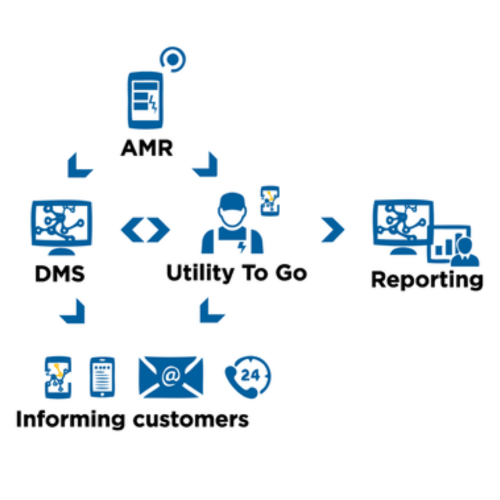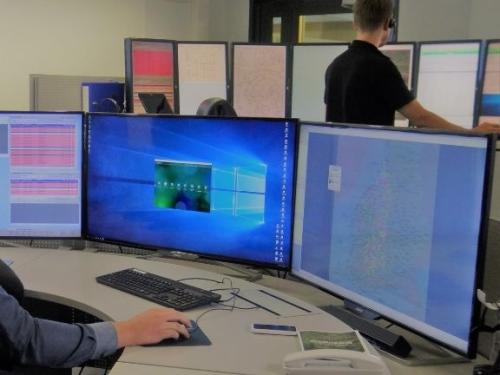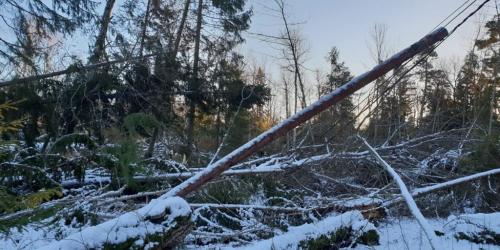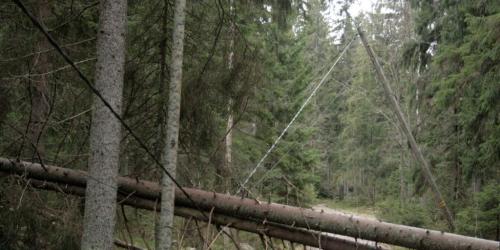Outage Management Outsourced
Ever heard of a utility that has outsourced 100% of its outage management to contractors? Well, here you have one - Elenia has done it for years in their low voltage network with the help of transparency, intelligent systems and well-defined processes, and their situational awareness is top-notch.
“In an LV (low voltage) case, there is nothing to do from the control room,” confirms Teemu Suvela, Operations Engineer at Elenia. And truly, the operators in the Elenia control room can take it easy at daytime, as the contractors handle the LV outages from start to finish, independently. “We only alarm the contractor to go to the fault location and repair the fault,” Teemu explains. There is also less and less need for phone calls, as the mobile solution Utility To Go allows for the field crews to see the needed information directly in the field, and the well-integrated smart services tackle 98% (!) of the potential customer phone calls, ensuring that the utility offers excellent customer service via multiple channels with transparent outage information. Highly beneficially, the smart systems have also allowed for the utility to fine-tune its cooperation with the contractors, resulting in very effective and straightforward processes.
Adopting Utility To Go (or UTG, as known in the field) has brought great benefits to the field work. Helmina Sioris, Electrician at one of Elenia’s contractors, Eltel Networks, describes: “The navigation is really good. And the maps are really clear and easy to check.” Going mobile has also reduced the need for paperwork and made our work faster. “For example, you don’t have to always print the maps, you can just check them from your phone. And when going out, you don’t have to take a lot with you because you can see what you need and you can prepare more. You can see which cable goes where before even going to the LV assembly, and you can, for example, find out when it’s built and taken to use. It helps a lot.”
Working as far up north as Finland is, the weather conditions get harsh especially in the winter. However, even in freezing temperatures, Helmina still chooses the mobile. “If it’s really cold, the phone battery can have struggles, but not that much. It’s pretty good. You can cover your phone so it doesn’t make it harder.”
In Utility To Go, the field crews see all the needed information about a LV blackout in real time, whereas the operator can monitor the situation in the DMS (distribution management system). The well-performing systems and fluent information flows raise the situational awareness on an even higher level from the very beginning of each outage situation, which, in turn, leads to wiser decisions and evidently, faster power supply to the customers. Phone calls still take place between the operators and linemen when needed, but the utility aims at reducing the need even further. “UTG is basically providing all the information about LV faults to the contractors,” Teemu describes. “The electricians can also operate the virtual LV switches with UTG, so when an outage starts and they open a manual switch, they can open it also in our distribution management system by using their mobile phones.”

Both the field crews and the control room also benefit from the real-time AMR interfaces - in the office just as well as in the field.
In the control room, the spontaneous AMR alarms show up in the DMS immediately when a fault occurs. “Most often with a LV fault, the AMR meter sends an alarm to the DMS, and I see it in the alarm list,” says Teemu, and continues: “Back in the day, when we didn’t have these alarms in our DMS, information about every LV fault came from customer phone calls to our outage hotline. Nowadays, most LV faults come to us via the AMR alarms so we know immediately when a fault occurs and we can dispatch a field crew even before the customer calls us.”
As the outage is created in the DMS, the system sends out automated SMS and emails to the affected customers, and updates Elenia’s online outage map and the IVR phone system with the same information.
The contractors, then, get the information from the UTG. Sami Nurmilo, Electrician at Eltel Networks, explains: “Usually, if we’re at the office and we’re informed about a consumption point with no supply, I first look it up in the UTG and I run the AMR query either for the single consumption point, or for the entire substation area.” From that, the electricians already see if the blackout concerns only one customer or if it’s further up the network, affecting several households. Sami continues: “Then, I see in the UTG what kind of a meter is in question so I can take it with me. Same goes for cable types. We can go collect what is needed and head to the location.”
In the field, the needed information is available at all times in the electricians’ smartphones. With UTG, the field crew can navigate to network components, open switches, and start the repair work. Smooth information flows ensure the control room and the customers keep getting updates from the field as the work progresses. Teemu adds: “It’s also great that when the electricians have repaired the outage, they can close the switch with the UTG. The switching status is also updated in my DMS, so I can check it.”
What’s more is that the field crew can also run a new AMR query directly at the spot, ensuring that the repair they have done works. “So when we have fixed the problem,” Helmina explains, “we check the AMR query again and simply make sure there are no more red dots on the map. We can then inform Elenia that we’re done and that the AMR query comes back clear.”
Another great benefit that comes with Utility To Go is that any idle time can be turned into productive work by finding tasks nearby. “There’s always something to fix,” says Helmina, “so we can search for tasks by dates, names or distance, and I usually go by distance to see the nearby tasks. So if we’re out in the field and we’re done early, and there are, for example, some cable locations to be marked close by, we can select that task and get it done since we’re already there.” Selecting the task also means reserving it, so that other field crews see there’s already someone working on it. That, in turn, also converts to less driving. “If you only have the tasks on papers, they’re usually not in an order and you only have random addresses, so you end up driving a lot because you don’t really know where they are. Now with UTG, you can just check which one is the closest one and go there, so you could really save up to 50 kilometers (over 30 miles) a day with it.”




